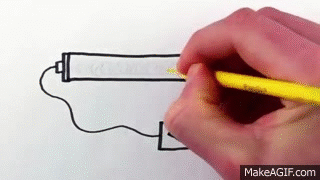How Modern Light Bulbs Work

The electric bulb is possibly one of the best inventions in the history of mankind. Since the discovery of fire, which eliminated human dependence on sunlight, the creation of these small lamps has extended the possibility of bringing light to all parts of the planet. The operation of the original incandescent bulb is, however, very different from the current low-energy fluorescent bulb.
How an Incandescent Light Bulb Works
An incandescent bulb, of the traditional ones, has a functioning in fact very similar to a torch. It is based on the heating of a metal, tungsten, through an electric current. This current, which passes through that thin filament causes the metal to incandescence and irradiate light.
How a Fluorescent Light Bulb Works
Since the late twentieth century, the fluorescent light bulb has begun to replace the traditional incandescent bulb, generally by government regulations seeking energy efficiency. And that is the great advantage of this type of lamps: they emit only heat, since they are based on the direct emission of photons.
Fluorescent bulbs are composed of an inert gas, encapsulated in a crystal that joins two filaments. In this case, the electric current that heats the filaments allows ionizing the gas. In this way, a plasma bridge is generated which causes the emission of photons, that is, of light.
The original fluorescent lamps were elongated and very fragile and needed magnetic ballasts (primers). In addition to being impractical, because they had to be replaced from time to time, they caused a flicker effect in the light, which has been eliminated with the electronic primers of the current compact fluorescent light bulbs.
Edison and the incandescent bulb
The invention of the electric bulb is usually associated with the figure of Thomas Alba Edison (1847-1931). But he was not his inventor, since these types of lamps had been known for decades before the great American creator began to work on it. As early as 1860, the British Joseph Swan (1828-1914) had produced a lamp with filament of coal, although the first electric lamp of history goes back to 1802 and was produced thanks to an experiment of the British also Humphry Davy (1778- 1829).
The invention of the energy-saving light bulb
Fluorescent lamps were first presented at the 1939 Universal Exposition in New York. Since then their use has spread throughout the world, although their large size (the original elongated fluorescents) prevented further development.
An engineer from General Electric created in 1976 the small fluorescent light bulb we now know
watch video:
Source: https://www.scienceworld.ca/file/how-modern-light-bulbs-work - http://physlab.org/wp-content/uploads/2016/03/Planck_ref8.pdf
Source of the image: MakeGif
Credits: Óscar Menéndez
Video credit: physics in a minute

Information Gold Mine. Your Welcome.
https://steemit.com/abuse/@iloveupvotes/permanent-compilation-common-knowledge-base-worksheet-it-stays-because-i-said-so-iloveupvotes